Abstract
1 The immediate effects on human performance of the 1,5-benzodiazepine, clobazam (20 mg), and the 1,4-benzodiazepines, chlordiazepoxide hydrochloride (20 mg) and diazepam (10 mg), were studied by adaptive tracking and measurement of reaction time. Each drug was ingested at 09.00 h and performance was measured at 09 h 30 min (0.5 h), 11 h 30 min (2.5 h), 14 h 30 min (5.5 h) and 18 h 30 min (9.5 h after ingestion). 2 With diazepam decrements in performance on adaptive tracking were observed at 0.5 h and 2.5 h and performance was enhanced at 9.5 h after ingestion. With clobazam performance at individual times did not differ significantly from control, but there was evidence of an improvement in performance during the day. There was no evidence of impaired performance on adaptive tracking after chlordiazepoxide hydrochloride. 3 Reaction time was slowed at 0.5 h and 2.5 h after diazepam and chlordiazepoxide hydrochloride. A decrease in reaction time was observed at 9.5 h after diazepam. No changes in reaction time were observed after clobazam. 4 The subjects as a group differentiated correctly between performance decrements on adaptive tracking after diazepam and the absence of performance decrements after clobazam and chlordiazepoxide hydrochloride. The persistence of the decrement in performance after diazepam was accurately assessed. 5 It is evident that the nature and persistence of impaired performance and the ability to appreciate impaired performance vary considerably between the benzodiazepines, and that the choice of a benzodiazepine should include careful consideration of performance sequelae.
Full text
PDF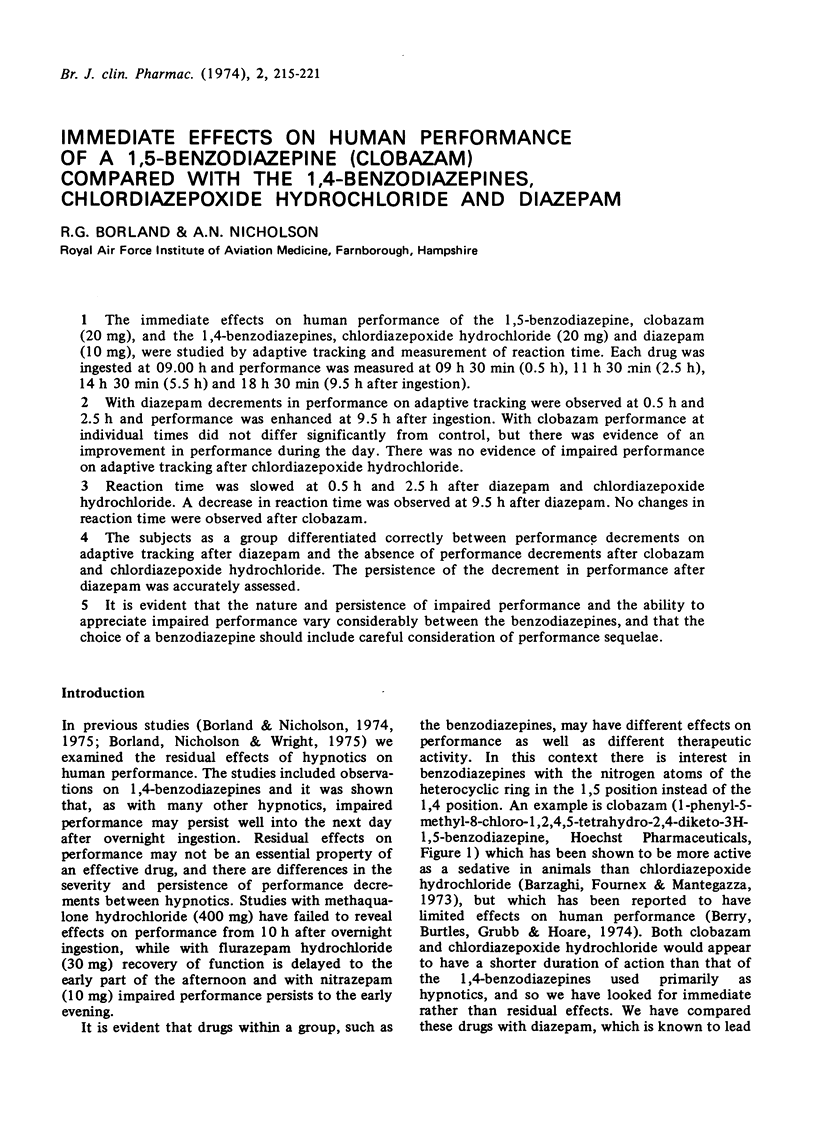
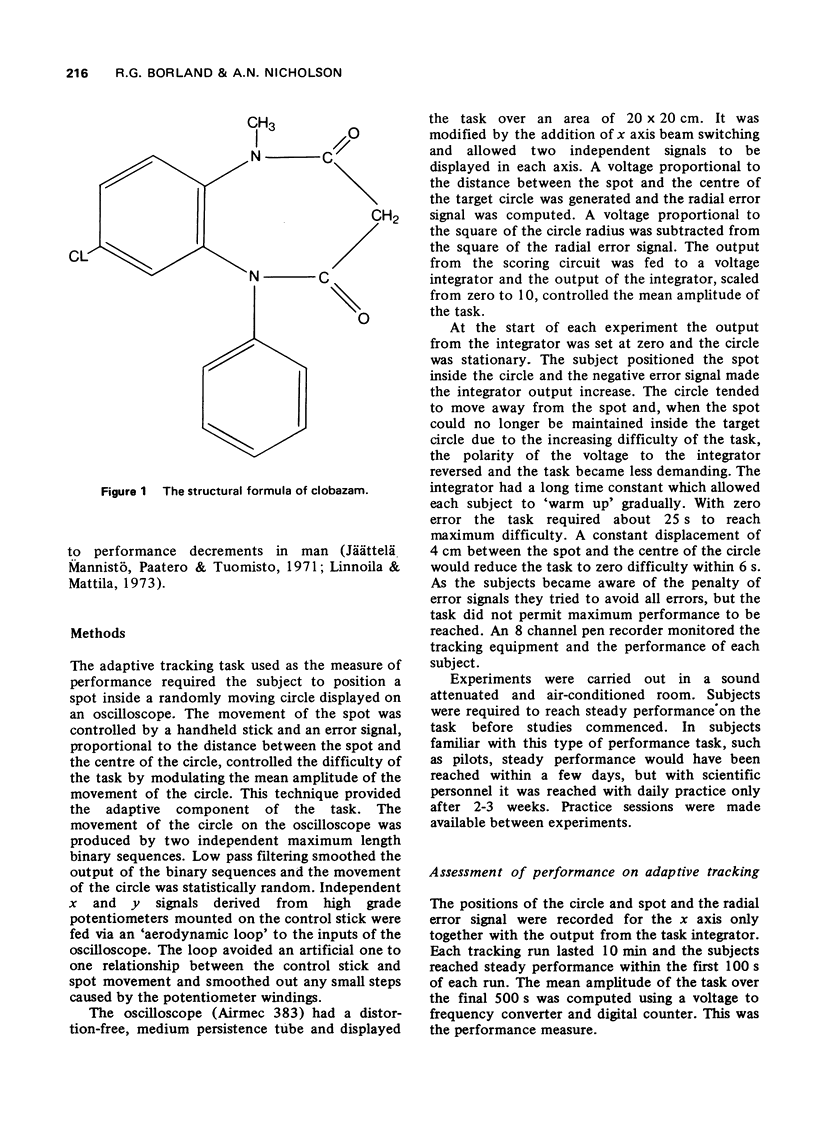
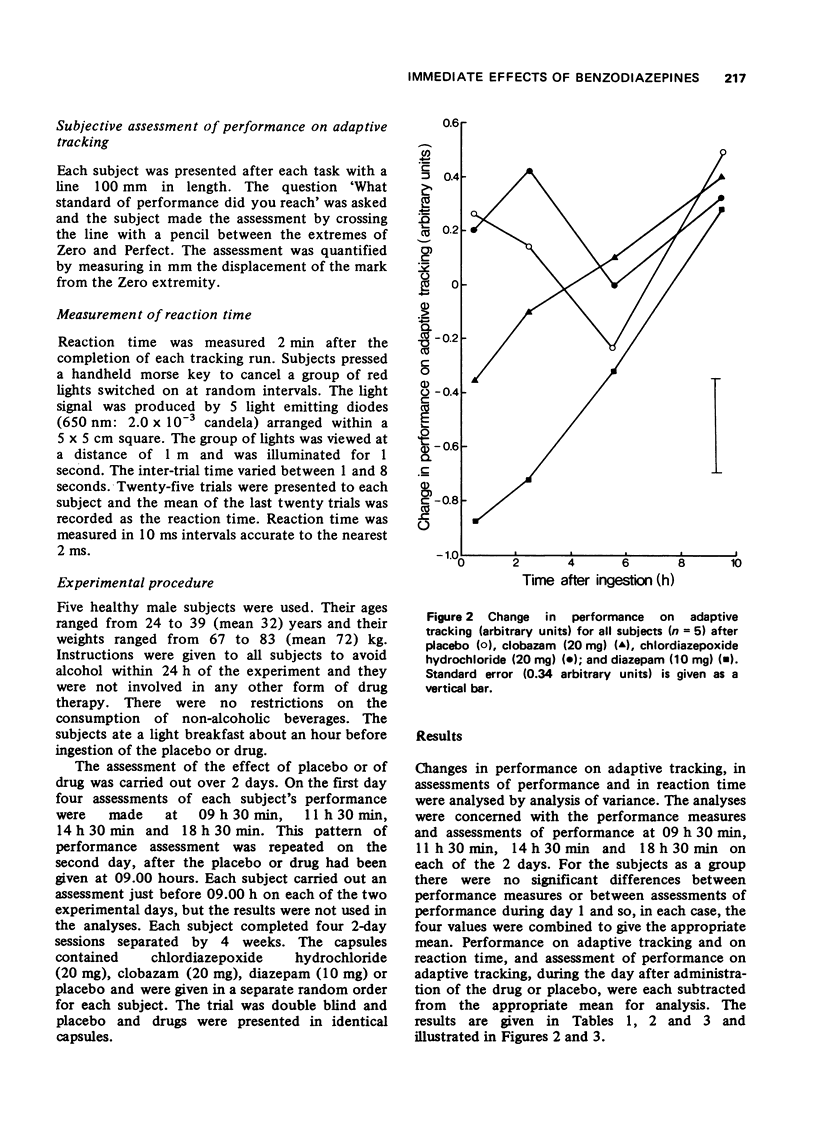

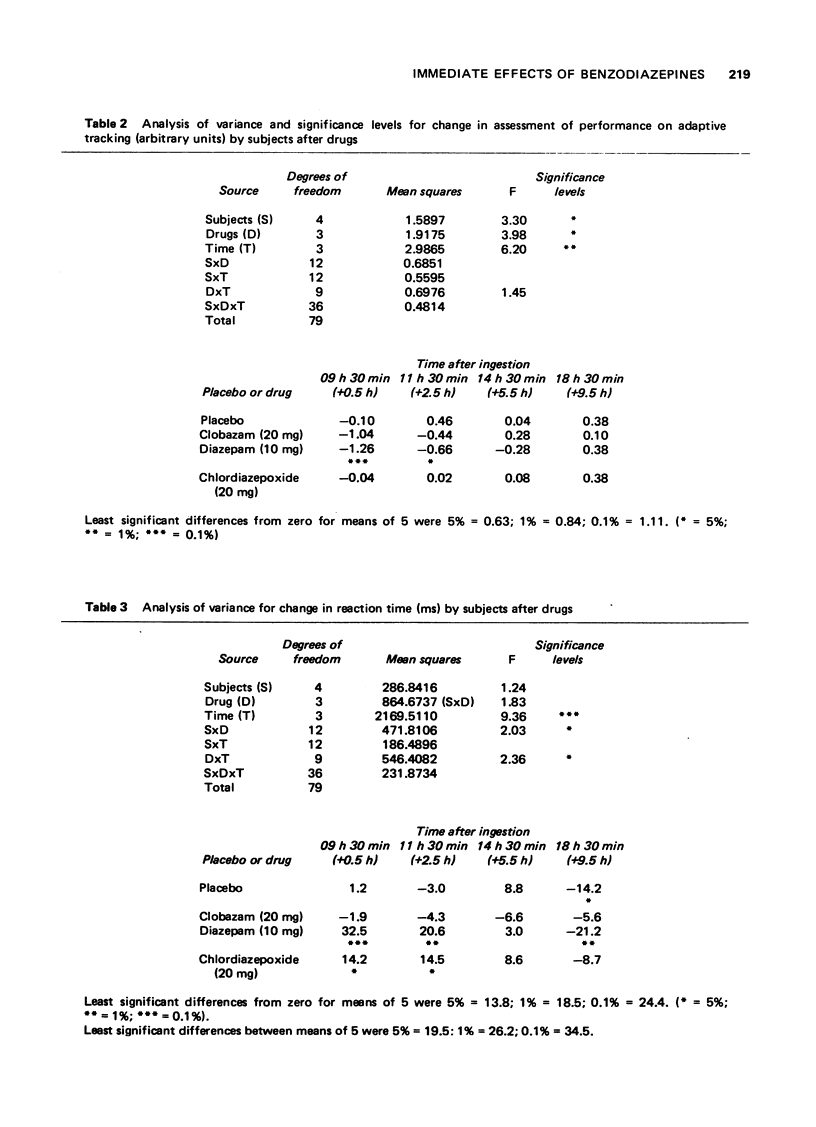
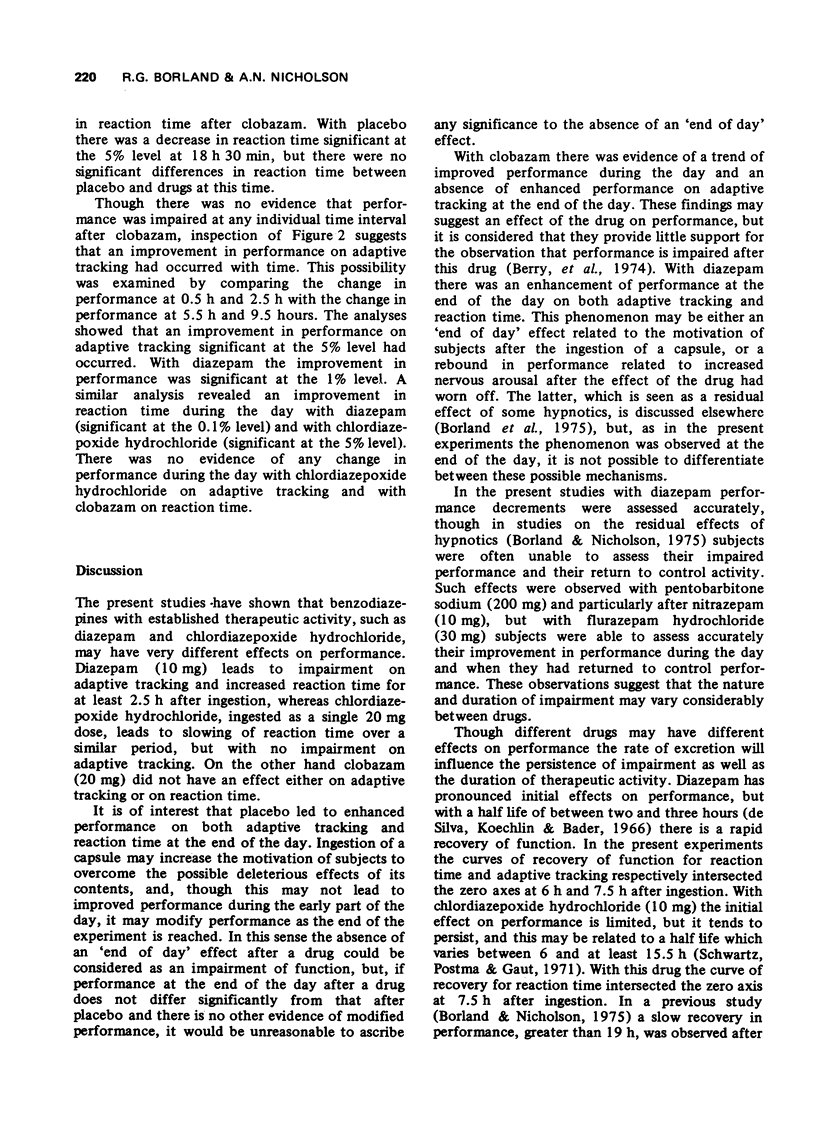
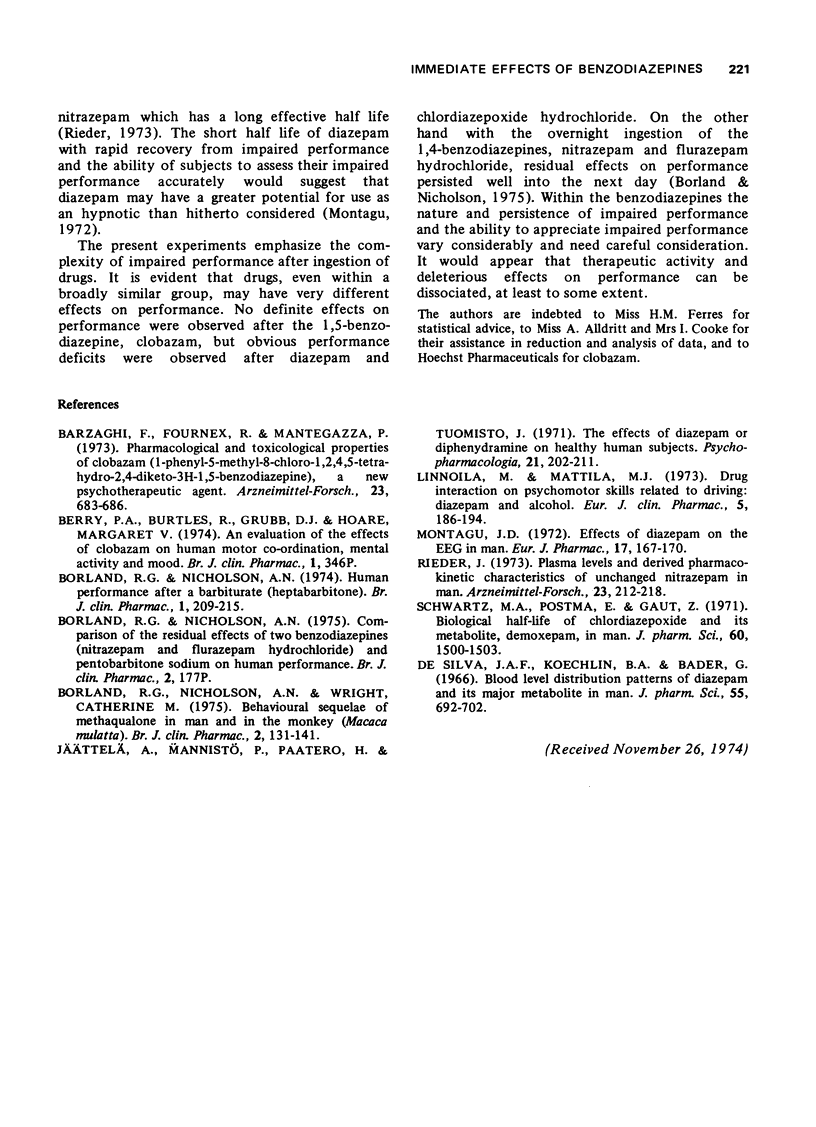
Selected References
These references are in PubMed. This may not be the complete list of references from this article.
- Barzaghi F., Fournex R., Mantegazza P. Pharmacological and toxicological properties of clobazam (1-phenyl-5-methyl-8-chloro-1,2,4,5-tetrahydro-2,4-diketo-3H-1,5-benzodiazepine), a new psychotherapeutic agent. Arzneimittelforschung. 1973 May;23(5):683–686. [PubMed] [Google Scholar]
- Borland R. G., Nicholson A. N., Wright C. M. Behavioural sequelae of methaqualone in man and in the monkey (Macaca mulatta). Br J Clin Pharmacol. 1975 Apr;2(2):131–141. doi: 10.1111/j.1365-2125.1975.tb01568.x. [DOI] [PMC free article] [PubMed] [Google Scholar]
- De Silva J. A., Koechlin B. A., Bader G. Blood level distribution patterns of diazepam and its major metabolite in man. J Pharm Sci. 1966 Jul;55(7):692–702. doi: 10.1002/jps.2600550706. [DOI] [PubMed] [Google Scholar]
- Jättelä A., Männistö P., Paatero H., Tuomisto J. The effects of diazepam or diphenhydramine on healthy human subjects. Psychopharmacologia. 1971;21(3):202–211. doi: 10.1007/BF00403859. [DOI] [PubMed] [Google Scholar]
- Montagu J. D. Effects of diazepam on the EEG in man. Eur J Pharmacol. 1972 Jan;17(1):167–170. doi: 10.1016/0014-2999(72)90284-1. [DOI] [PubMed] [Google Scholar]
- Rieder J. Plasma levels and derived pharmacokinetic characteristics of unchanged nitrazepam in man. Arzneimittelforschung. 1973 Feb;23(2):212–218. [PubMed] [Google Scholar]
- Schwartz M. A., Postma E., Gaut Z. Biological half-life of chlordiazepoxide and its metabolite, demoxepam, in man. J Pharm Sci. 1971 Oct;60(10):1500–1503. doi: 10.1002/jps.2600601012. [DOI] [PubMed] [Google Scholar]


